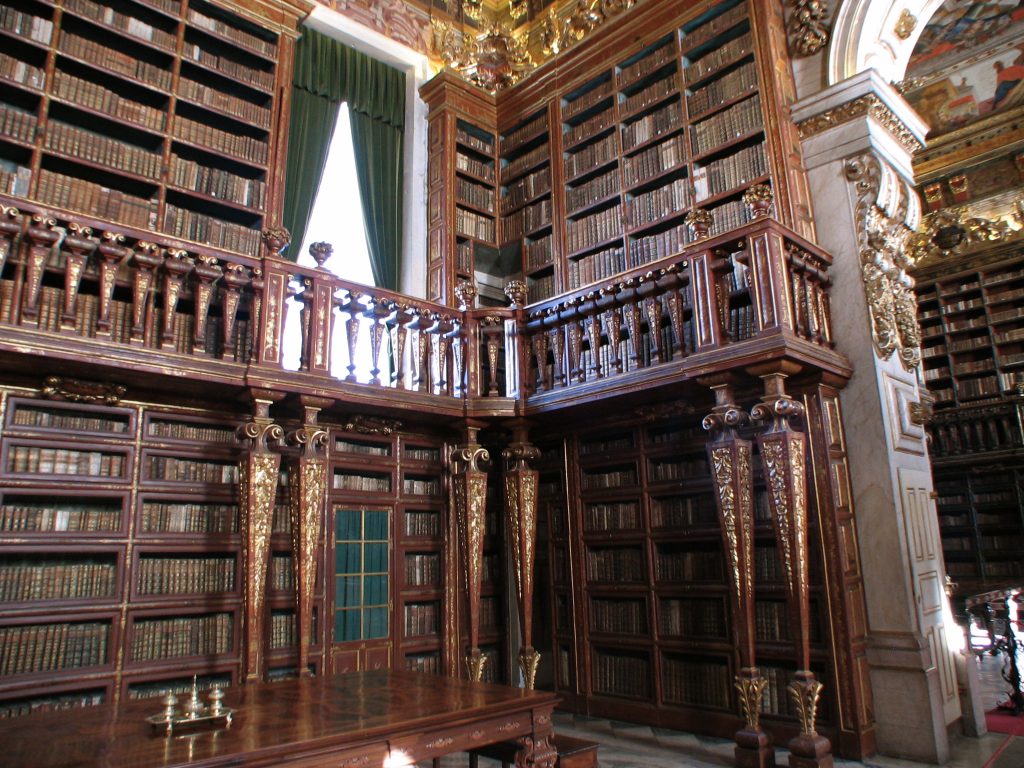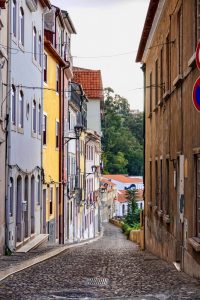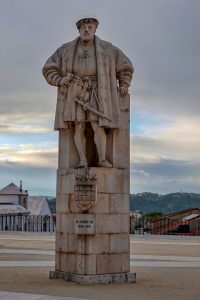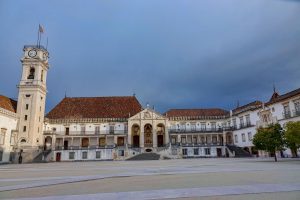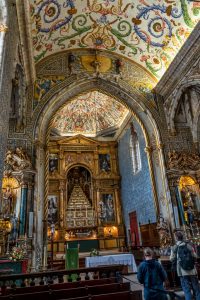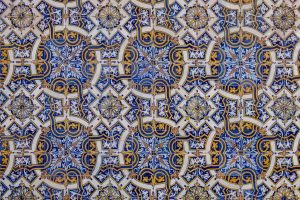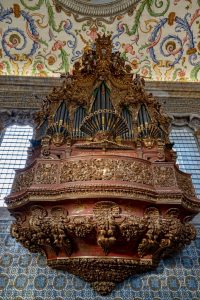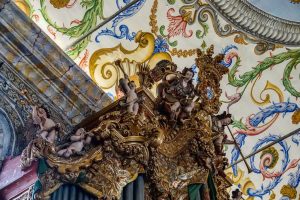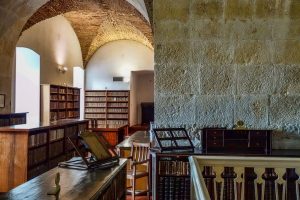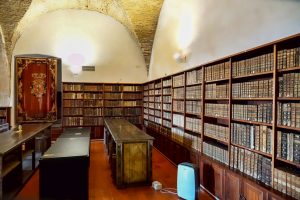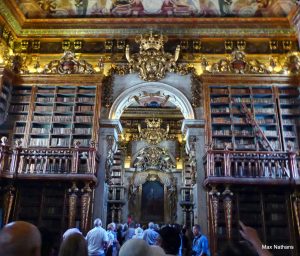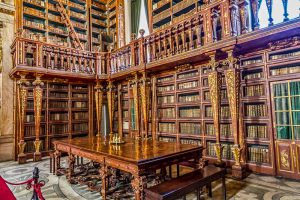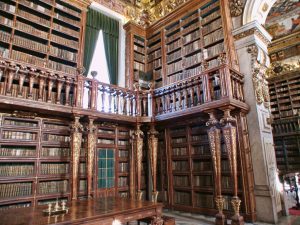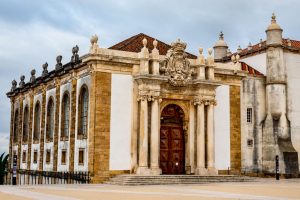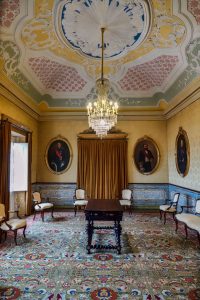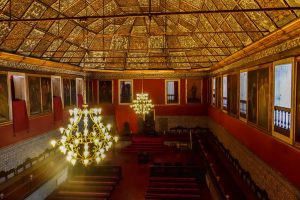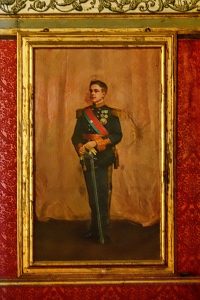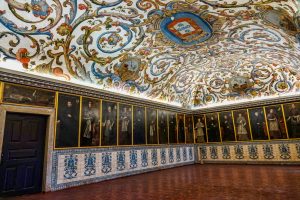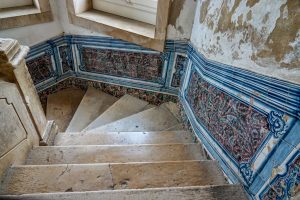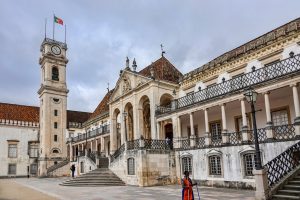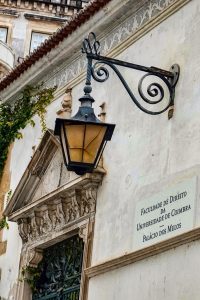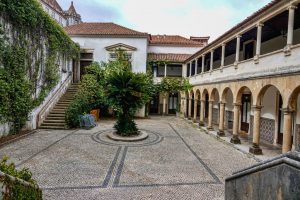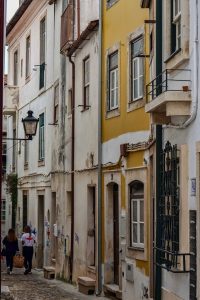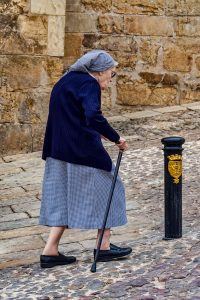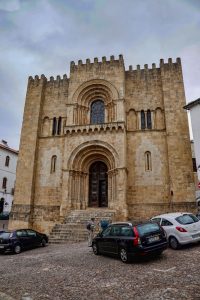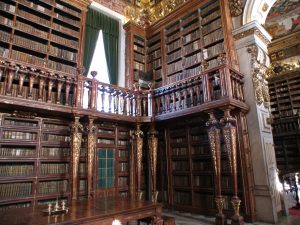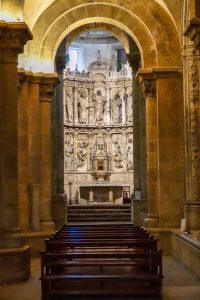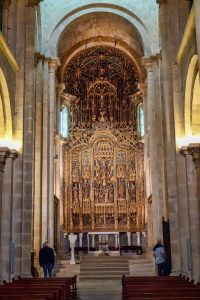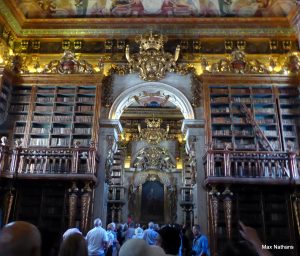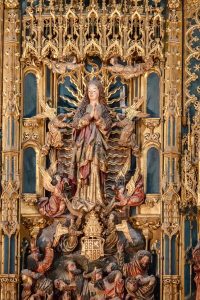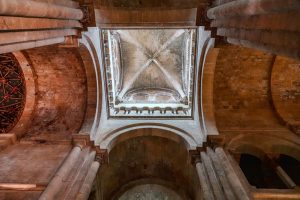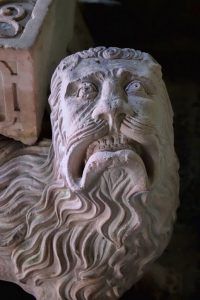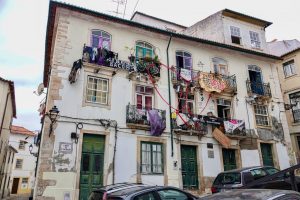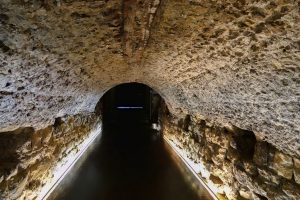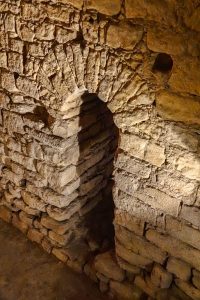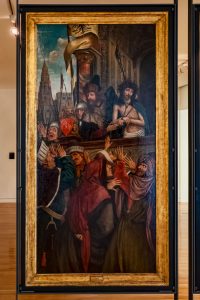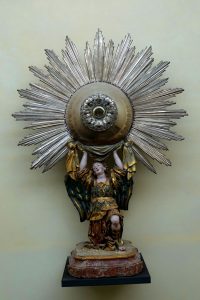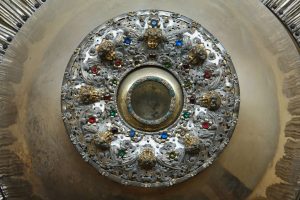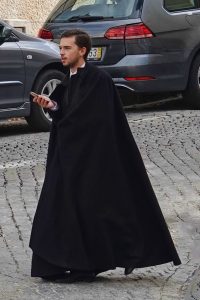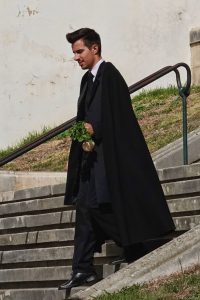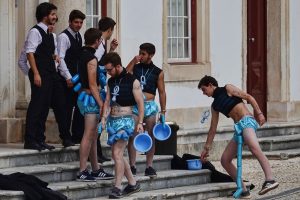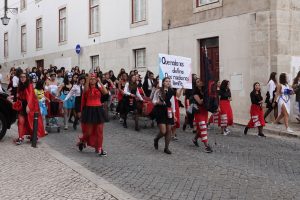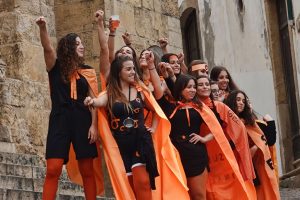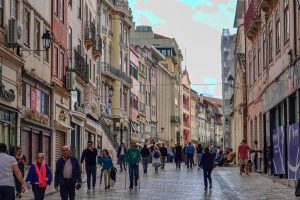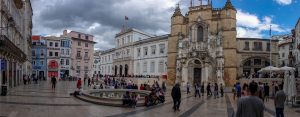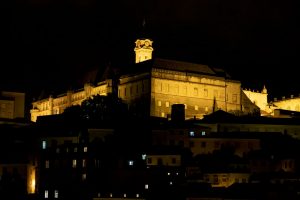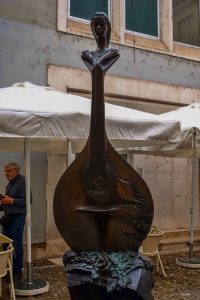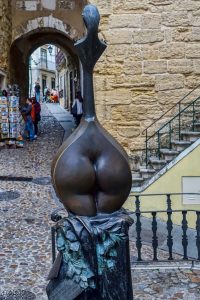TODAY’S TOURING
The hotel included a breakfast buffet. We joined the crowd for an early breakfast and walked, up hill, to the University of Coimbra. The hotel desk told us that university classes start tomorrow and today was student parade day (e.g. drink a lot, dress up in costumes, wear student cloaks, push shopping carts, cheers) through town. The student parade started at 9:00 AM and ended at TBD. There are two student parades each year. I assume the day before each semester.
- Walked up hill to university and found the ticket booth.
- We bought tickets to view the university highlights, including timed tickets for the library (9:20 AM).
- Toured the chapel when it opened at 9:00 AM. There were only four (4) other people in the chapel with us.
- Toured the library. We only got 15 minutes in the library and photos were not allowed.
- Toured the palace.
- Walked to cathedral and waited for mass to end before touring the cathedral.
- Toured the cathedral
- Toured the De Castra Museum with Roman Cryptoporticus under the museum.
- Toured the new cathedral.
- During our touring and our walk back to the hotel, we saw many students parading with grocery carts, asking for donations, chanting, and drinking.
Dinner was at Taberna d’Almedina. We had a light meal consisting of a cheese and meat board. Walking back to the hotel, we still heard and saw students parading in the street.
REFERENCES
▲▲UNIVERSITY OF COIMBRA (UNIVERSIDADE DE COIMBRA) (Rick Steves)
This venerable centuries-old university, founded in 1290, was modeled after Bologna’s university (Europe’s first, founded in 1139). It occupies a stately three-winged former royal palace (from when Coimbra was the capital), beautifully situated overlooking the city. At first, law, medicine, grammar, and logic were taught. Then, with the rise of seafaring in Portugal, astronomy and geometry were added. While Lisbon’s university is much larger.
Coimbra’s university (with 25,000 students) is still the country’s most respected. For visitors, the university marks the top of the old town. While most of it is mid-20th-century sprawl, the old core of the university (velha universidade—the palace section, with its iron gate, courtyard, fancy ceremonial halls, chapel, and library) makes for an interesting visit.
St. Michael’s Chapel (Capela de São Miguel) (Rick Steves)
This chapel is behind a 16th-century facade (enter through door to the right of facade—once inside, knock on the door on the left marked capela). The architecture of the church interior is Manueline—notice the golden “rope” trimming the arch before the altar. The chapel was begun in 1517, but much of the decor is from a later time. The altar is 17th-century Mannerist, with steps unique to Portugal (and her South American colonies); based on Jacob’s Ladder, they symbolize the steps the faithful take on their journey to Heaven.The “carpet tiles” covering the walls date from the 17th century and kept the chapel cool in the summer. The 2,100-pipe, 18th-century German-built organ is notable for its horizontal “trumpet” pipes. Found only in Iberia, these help the organist perform the allegorical fight between good and evil—with the horizontal pipes trumpeting the arrival of the good guys. The box seats for the royal family are high above the musicians’ loft in the rear. Students and alums enjoy the privilege of having their weddings here.
▲King João’s Library (Biblioteca Joanina) (Rick Steves)
In this elegant building, one of Europe’s best surviving Baroque libraries displays 55,000 books in 18th-century splendor. The zealous doorkeeper locks the door at every opportunity to keep out humidity. At your appointed time, you’ll be allowed into this 300-year-old temple of thought. (After you enter, watch the doorkeeper use the giant key as a hefty doorknob.)
▲King João’s Library (Biblioteca Joanina) (Smithsonian)
In Coimbra, a colony of Common pipistrelle bats makes their home behind the bookshelves of the university’s Joanina Library, emerging at nightfall to consume flies and gnats and other pests before swooping out the library windows and across the hilltop college town in search of water. The service they provide is indispensable: They eat insects in the library that might otherwise feed on manuscript pages.
Whether the flittermice took up residence here 300 years ago, when the library was built, or more recently is unknown. Librarians do know they’ve been here since at least the 19th century; they still use fabric made from animal skin, imported from Imperial Russia, to cover the original 18th-century tables, protecting them from scat left by the library’s flying residents. And every morning, just as their forebears did, the librarians remove the skins and clean the library floors.
Grand Hall (Sala dos Capelos) (Rick Steves)
From the middle of the Via Latina, climb the tiled stairway. Follow the route through an ornate room, then trudge around a narrow hallway, where you can peek out from little balconies into the Grand Hall—the site of the university’s major academic ceremonies, such as oral exams and graduations. This regally red room was originally the throne room of the royal palace. Today, the rector’s green chair sits like a throne in front. During ceremonies, students in their formal attire fill the benches, and teachers sit along the perimeter as gloomy portraits of Portuguese kings watch from above.
▲Old Cathedral (Sé Velha) (Rick Steves)
Same old story: Christians build a church on a pre-Christian holy spot (Visigoths in sixth century), Moors destroy the church and build a mosque (eighth century), then Christians push out the Moors (1064), tear down their mosque, and build another church (consecrated in 1184).
▲▲Machado de Castro Museum and Cryptoporticus of Aeminium (Rick Steves)
Housed in an elegant old bishop’s palace, the huge Machado de Castro
Museum (Museu Nacional Machado de Castro) has two parts: the vast, barren understructure (Criptoportico de Aeminium) of the ancient Roman
forum upon which the palace was built; and a fine collection of art through the ages, particularly strong on sculpture (including 14th- to 16th-century statues taken from dissolved monasteries). To save needless climbing, visit this sight before or after the old university (since both are at roughly the same altitude).
